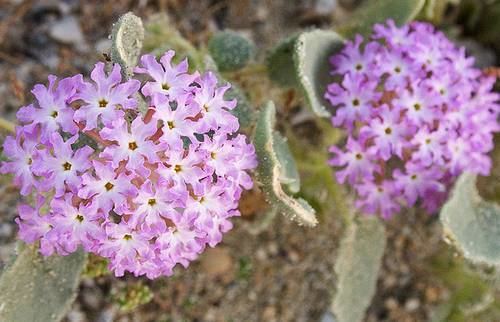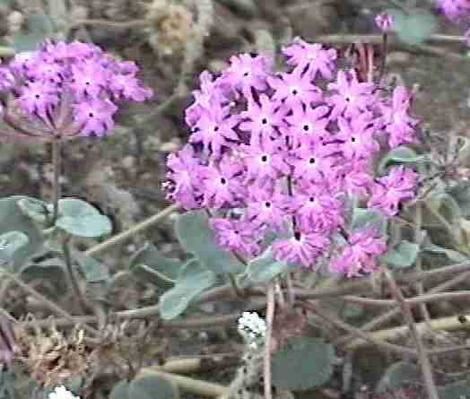Tribe Nyctagineae | Scientific name Abronia Rank Genus | |
 | ||
Lower classifications | ||
Abronia, the sand-verbenas or wild lantanas, is a genus of about 20 species of annual or perennial herbaceous plants in the family Nyctaginaceae. Despite the common names, they are not related to Verbena (vervains) or lantanas in the family Verbenaceae. They are closely allied with Tripterocalyx.
Contents

They are native to western North America, from Alberta and Saskatchewan, Canada, south to west Texas, California, Baja California and central Mexico, growing on dry sandy soils. Abronia macrocarpa, a Texas endemic, is protected under the Endangered Species Act. Abronia ammophila, the Yellowstone sand verbena, is a plant unique to Yellowstone National Park’s lakeshores and is endemic to the park. Only a few species are widespread, and many are quite rare. They make very attractive garden plants for hot, dry sandy sites.

Formerly placed here
Cultivation and uses
The stout, sweet root of Abronia fragrans and Abronia latifolia, sometimes over 60 cm long, can be eaten as a root vegetable.
